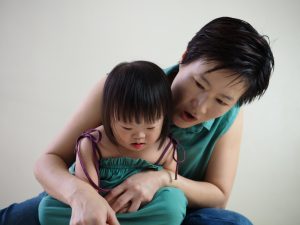Researchers from the National University of Singapore (NUS), including a multi-disciplinary team from the Yong Loo Lin School of Medicine (NUS Medicine), the National University Health System (NUHS), and the National University Hospital (NUH), have delved into the potential of digital health solutions in enhancing maternal health during pre-pregnancy, pregnancy, and post-pregnancy stages.
Their study was published in NPJ Digital Medicine. It highlights the importance of personalisation and localisation in digital health interventions for expectant and new mothers.
Understanding the Role of Digital Interventions
Digital health interventions, like mobile apps, are increasingly seen as tools for promoting healthy lifestyle changes. For pregnant women in various stages of motherhood, such interventions can play a crucial role in influencing diet, exercise, and sleep habits. All of these factors are essential for the well-being of both mother and child. However, challenges exist regarding adherence and long-term engagement with these digital solutions.
Personalisation and Localised Content as Key Drivers
The study was led by Dr. V Vien Lee, a research fellow at the Institute for Digital Medicine (WisDM) at NUS Medicine. It involved interviews with 44 women to gather insights on their needs and preferences regarding digital health solutions. The research identified personalisation and localised content as critical factors for the effectiveness and sustainability of these tools.
Dr Lee added, “Women who are trying to conceive, who are pregnant or who have recently given birth, have unique journeys and want digital health interventions tailored to their journey. Part of tailoring the intervention includes providing health information at the right time and sharing anecdotes of women who have similar experiences.”
Personalisation Features
- Adaptive Feedback: Providing data-driven, personalised information at appropriate times. This can aid women in understanding and navigating their journey from conception to post-birth.
- Milestone Indicators: Tailoring features to display relevant timelines for fertility checks, medical investigations, and baby development stages.
Localised Content Needs
- Access to Local Healthcare Resources: Information on regional healthcare services such as fertility testing, maternity wards, and paediatricians.
- Guidance on Local Lifestyle Practices: Localised advice on diet and alternative medicine is often not readily available online.
- Understanding the Healthcare System: Assistance in navigating the local healthcare processes from preconception to post-birth.
The Impact of the Study
The findings from this study offer a comprehensive view of the participants’ priorities. Therefore, it serves as a framework for developing effective user-centric digital solutions. Additionally, Professor Dean Ho, Director of WisDM, and Dr Agata Blasiak, Research Assistant Professor at WisDM, emphasise the need for digital health solutions to be deeply contextualised to meet the specific needs of pregnant women in Singapore.
Future Implications
The insights from this study are expected to guide key players in the digital health ecosystem in developing solutions that are centred around the user’s experience. By addressing specific concerns and providing actionable information at the right time, these digital health interventions can significantly enhance maternal health during all stages of pregnancy.
Conclusion
The NUS team’s research underlines the potential of digital health solutions in supporting maternal health. By focusing on personalisation and localisation, these tools can become more effective and user-friendly. This will encourage long-term engagement and better health outcomes for mothers and their children. This study marks a significant step towards understanding the digital health needs of women in various stages of motherhood.












